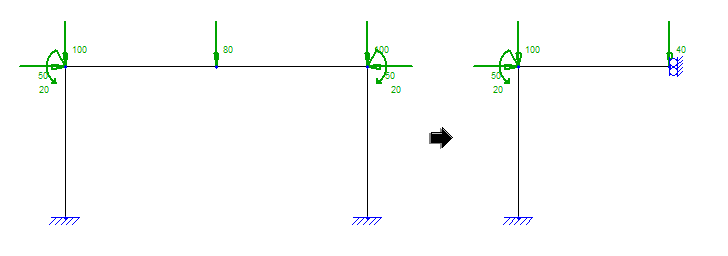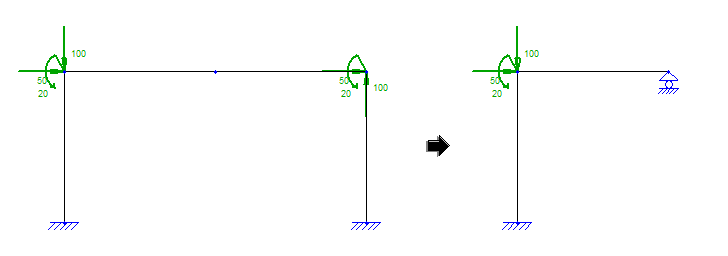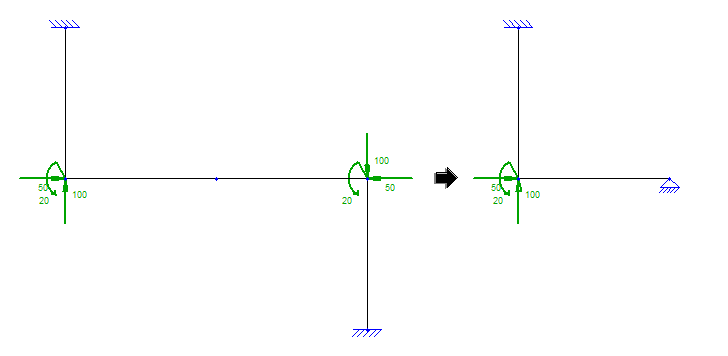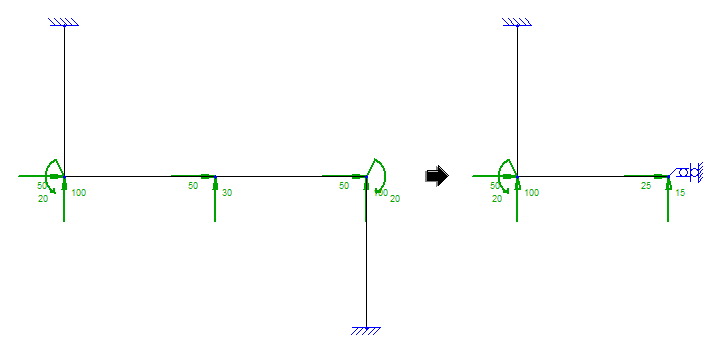If a structure is symmetric (Symmetric structure with symmetric / anti-symmetric loads), then the size of the finite element model can be reduced, which, in turn, reduces the time and cost of the analysis. For each plane of symmetry in the model, the model size can be reduced by a factor of approximately two. See the examples below.
Case 1: Symmetric structure (axis) + Symmetric loads (axis)

For the above example, half the structure can be analyzed using a "101" constraint for the node on the symmetric axis. Note that if there is a load applied on that node, half the load has to be applied on the constrained node of the second model.
Case 2: Symmetric structure (axis) + Anti-Symmetric loads (axis)

For the above example, half the structure can be analyzed using an "010" (x-Roller) constraint for the node on the symmetric axis.
Case 3: Symmetric structure (point) + Symmetric loads (point)

For the above example, half the structure can be analyzed using a "110" (Pinned) constraint for the node on the symmetric point.
Case 4: Symmetric structure (point) + Anti-Symmetric loads (point)

For the above example, half the structure can be analyzed using a "001" constraint for the node on the symmetric point. Note that if there is a load applied on that node, half the load has to be applied on the constrained node of the second model.